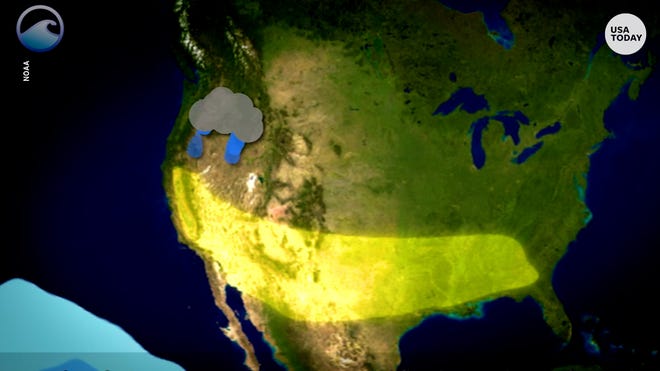
Temperatures around Greater Cincinnati are cooling down and feeling more fall-like but that doesn't necessarily mean it will be a cold winter.
Federal forecasters at the National Oceanic and Atmospheric Administration's Climate Prediction Center are anticipating wetter-than-average conditions for the Ohio Valley according to the 2021 Winter Outlook, which extends from December 2021 through February 2022.
Other areas that can expect wetter- and warmer-than-average conditions this winter include portions of the Northern U.S., primarily in the Pacific Northwest, northern Rockies, Great Lakes and western Alaska.
The NOAA is predicting above-average temperatures across much of the South and most of the eastern U.S. this winter, thanks to La Niña conditions for the second winter in a row.
More:NOAA's winter weather outlook: Above-average temperatures in South and East, thanks to La Niña
NOAA said this year's La Niña (Spanish for “little girl”) probably will persist through the winter.
The Old Farmer's Almanac had previously predicted that this winter, Kentucky, most of southern and central Ohio and Indiana will be cold and snowy. Northern Ohio and Indiana are predicted to be cold and dry.

The NOAA's temperature outlook shows temperatures leaning around 40-50% above normal for the winter in Ohio, Kentucky and southern Indiana.
The precipitation outlook shows around a 33-40% chance above normal for Northern Kentucky and a small portion of Southwest Ohio, including Cincinnati, and a 40-50% probability above normal for most of Indiana and Northern Ohio.

Source link









